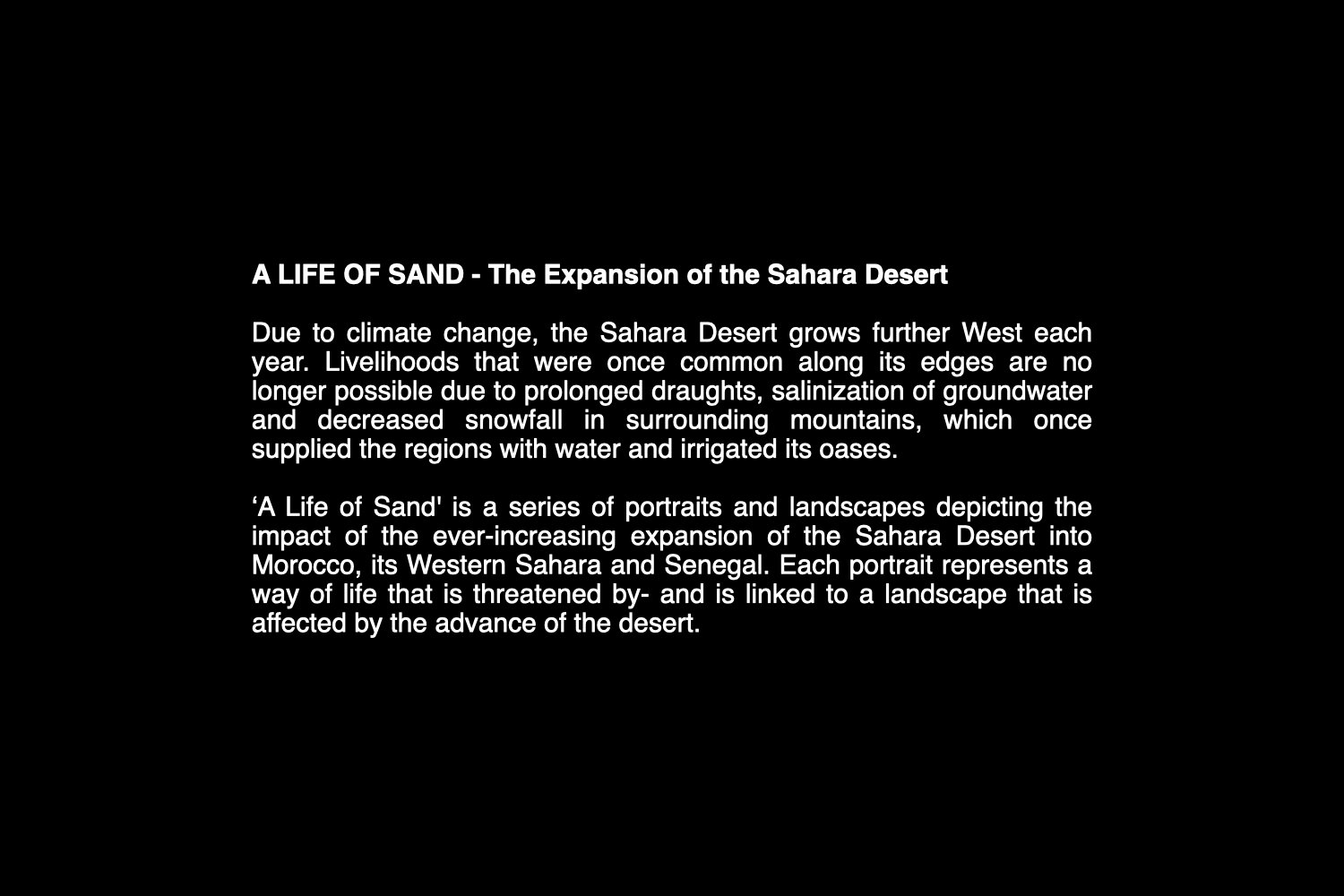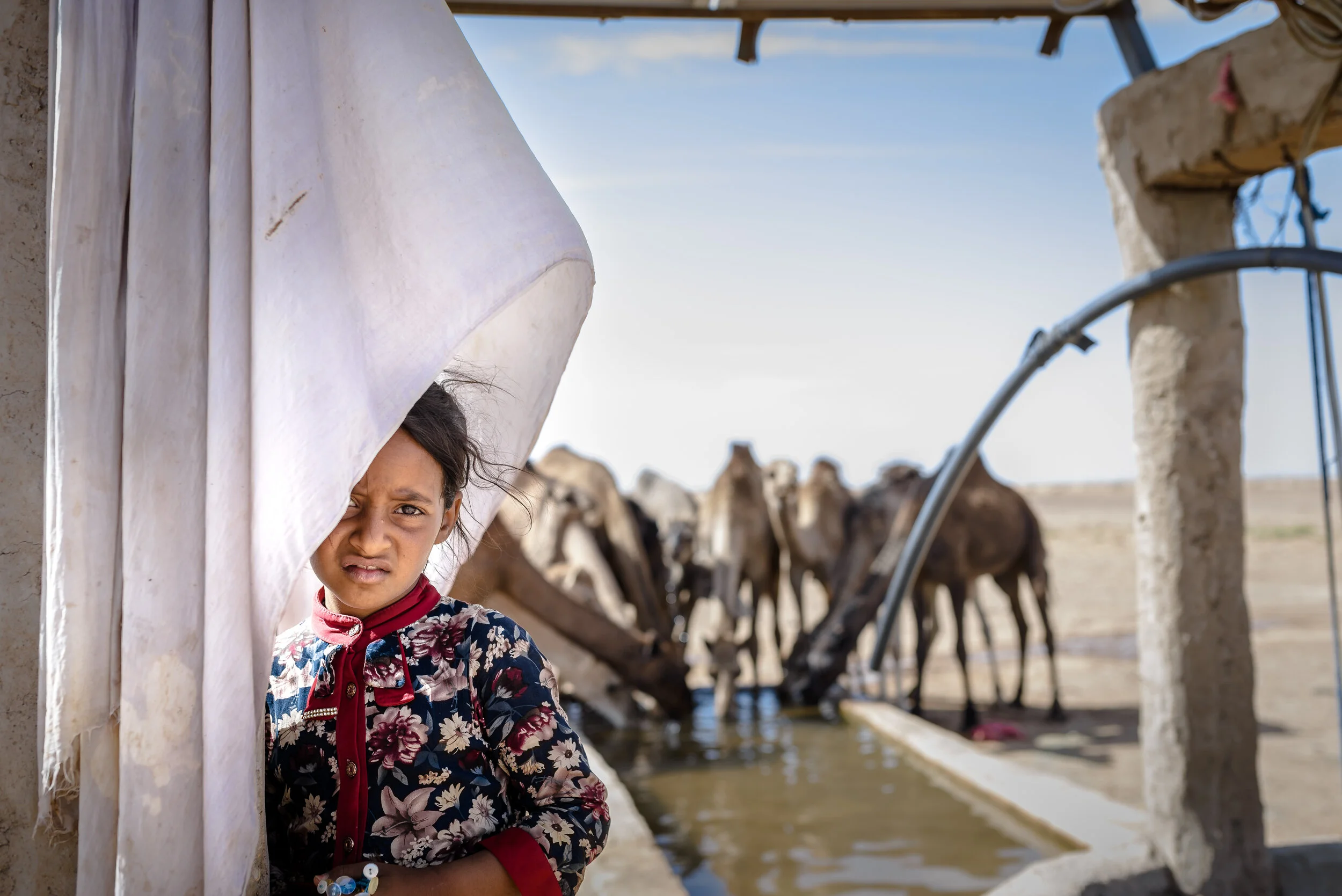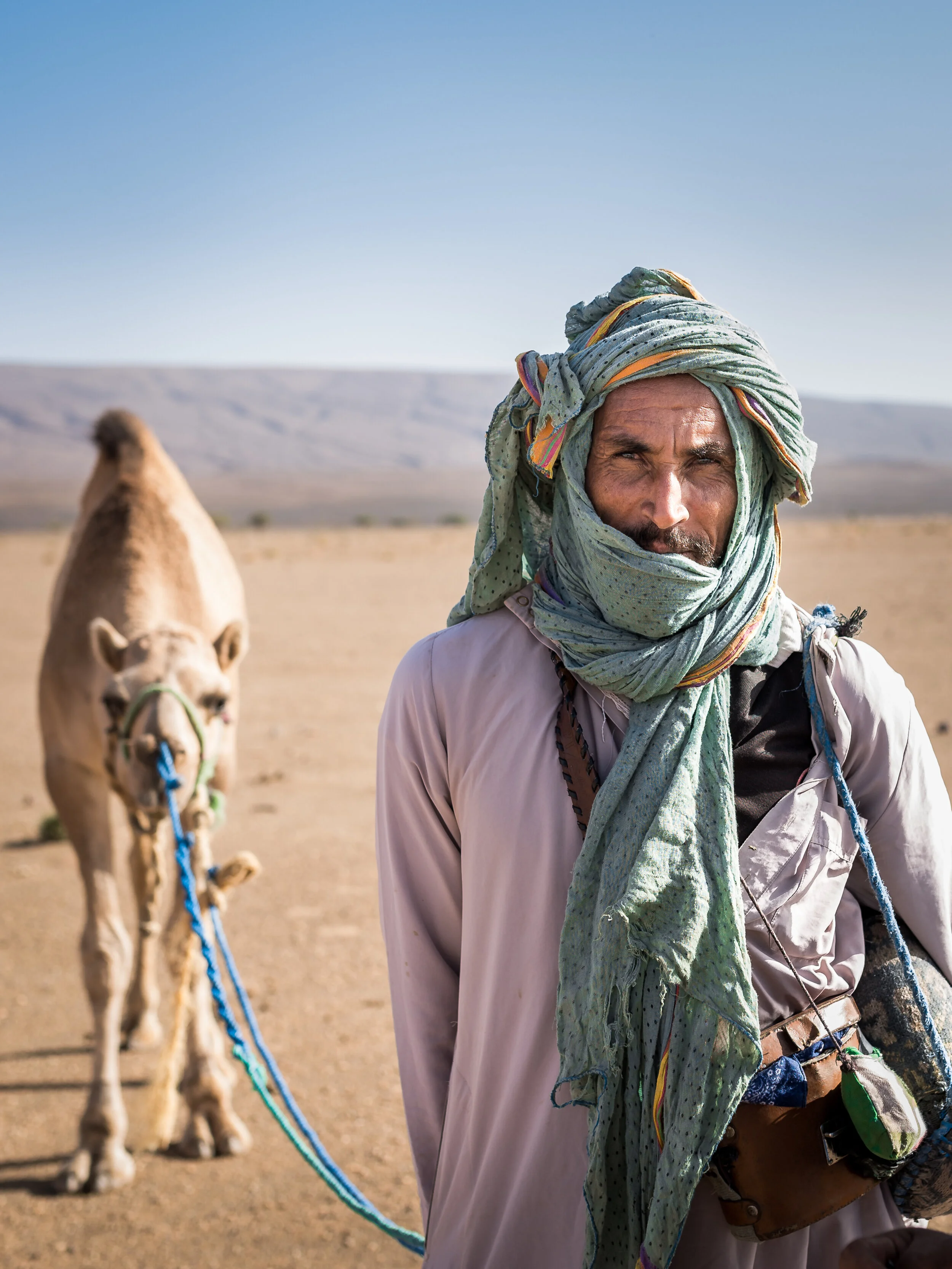















Africa is the continent least responsible for human-caused climate change, but it’s the most vulnerable to its effects because of its unique features and lack of economic means to fight them. Along the North-Western borders of the Sahara desert, large areas of land are subject to desertification every year, threatening the livelihoods of the people that live there.

Toumliline, Atlas Mountains, Morocco - 25/09/2017
A nomadic goat herder with his dog at a cliff in the Atlas mountains overlooking a dried-out river bed.

Toumliline, Atlas Mountains, Morocco - 25/09/2017
Small dams and an irrigation system built by local villagers cause a small area to blossom with vegetation. As snowfall on the peaks of the Atlas Mountains becomes less each year, the amount of meltwater downstream decreases the flow of water and threatens the livelihoods of villagers. Locals indicate that they can now only harvest once a year, while they used to be able to do this twice a year.

Tamtetoucht, Morocco - 27/09/2017
A portrait of a butcher with one of his goats at the space he uses for slaughter. Goat cattle constitute an important source of food and income for locals and nomadic tribes in rural Morocco. The goats graze throughout the plains at the outskirts of the Atlas Mountains, but vegetation is decreasing due to longer periods of drought and a decrease of melting water from the High-Atlas region. Herders travel for weeks at a time to find a patch of green for their goats to graze. When the time is ripe, they are sold to butchers to feel the villages.

Tamtetoucht, Morocco - 25/09/2017
A goat herder is herding a pack of sheep and goats through a dried-out river bed in the Atlas Mountains. Locals say the amount of water in the river decreases every year.

Tamellalte, Morocco - 02/102017
A family in their hose in Tamellalte, a small village along the Oued Dades river. Together with other villagers, the family has built an irrigation system using the water from the Dadès river that supports a small patchwork of gardens along the waterside. The families mainly grow what they are able to eat themselves. Because of the decreasing flow of meltwater from the Atlas Mountains, the way of life of the villagers is threatened. Many young people are leaving the region as a result and settle in large cities along the Atlantic coast.

Tamellalte, Morocco - 02/10/2017
A view of the village of Tamellalte, its gardens and irrigation systems using the water of the Dadès river.

M’Hamid, Morocco - 11/10/2017
A girl from a nomadic tribe at a well on the outskirts of the Sahara Desert. The water from the well is too salinated for humans to drink or for plants to grow, but camels can still hydrate sufficiently through drinking it. Each year, the Sahara desert expands into the surrounding villages, and the region becomes harder to live.

Foum Zguid, Morocco - 10/10/2021
A view of the last vegetation at the outskirts of the Sahara Desert. As the Sahara expands each year, locals say this vegetation will be lost to the sand as well.

Siné Saloum Delta, Senegal - 28/12/2017
A family working on the fields of the Siné Saloum Delta in Senegal, just south of the Sahara Desert. Desertification and land degradation are among the main causes of low agricultural productivity in Senegal. Extreme weather conditions related to climate change make matters worse, affecting food security, livelihoods and job opportunities, which triggers migration from rural areas.

Siné Saloum Delta, Senegal - 28/12/2017
An area of farmland with grazing cows in the Siné Saloum Delta. As saltwater from the Atlantic Ocean moves into the delta region in the dry season, it salinizes the groundwater by saltwater intrusion. As the dry season becomes longer each year, the groundwater becomes saltier. Certain crops don’t grow anymore and the amount of livestock - which depends on the vegetation and water from groundwater wells - decrease.

Tamellalte Oasis, Morocco - 02/10/2017
An elderly woman is feeding her granddaughter in the oasis of Tamellalte. Between the Atlas Mountains and M'hamid El Ghizlane at the outskirts of the Sahara, close to 2 million people live in oases like Tamellalte. The settlements grow around freshwater sources life rivers or groundwater reserves, but require consent care to maintain. Villagers build irrigation systems and plant new vegetation to keep the desert at bay. But draught, retreating groundwater, and desertification are making this work harder each year.

Tamegroute, Al Fougara, Morocco - 03/10/2017
A man transports a cart of palm fruits and dates with a donkey through the oasis of Tamegroute. Ecologists say that oases form a natural barrier against the expansion of the desert. If they were lost, exerts say the Sahara could reach as far as the Atlas mountains and threaten large Moroccan cities.

Foum Zguid, Morocco - 11/10/2017
A nomadic herder is grazing his pack of ten camels along the outskirts of the Sahara Desert. Where nomads used to herd over one hundred camels, only small packs are left now. This herder has about 10 camels left in the pack. The rest were all lost to the draught, he says. The animals provide milk, meat and skins, traditional sources of income for the nomadic tribes living in the region. As climate change makes it harder for them to sustain their traditional way of life, most have now moved to professions in the tourism industry.

Foum Zguid, Morocco - 11/10/2017
A view of the outskirts of the Sahara desert where a camel herder and his son are grazing a small pack of camels.